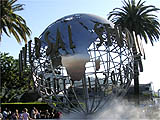




|
|
Pasadena City Data
![[City Map of Charleston]](images/maps/citymap02.gif)
Copyright (C) Mapquest
![[City Map of Charleston]](images/maps/citymap03.gif)
Copyright (C) Mapquest
|
The City Data:
Population:
133,936
Elevation:
865 feet
County:
Los Angels
Land area:
23.1 square miles
longitude:
118��7'55" West
latitude:
34��9'22" North
Races in Pasadena:
White (39.1%)
Hispanic (33.4%)
Other race (16.0%)
Black (14.4%)
Two or more (5.4%)
Chinese (3.3%)
Filipino (2.1%)
Japanese (1.6%)
Indian (1.5%)
Korean (1.0%)
Other Asian (0.8%)
Asian Indian (0.7%)
Nearest Big Cities
Over 200,000 : Los Angeles (17.5 miles , pop. 3,694,820)
Neighboring Cities:
Altadena (2.3 miles ), San Marino (2.7 miles ), South Pasadena (3.4 miles ), East Pasadena (3.9 miles ), East San Gabriel (4.3 miles ), San Gabriel (4.9 miles ), Alhambra (5.1 miles ), Sierra Madre (5.6 miles ).
|
|
History
The original inhabitants of Pasadena and surrounding areas were the Hahamongna, a branch of the Tongva (part of the Shoshone language group). Pasadena, like many municipalities in California, began as part of land that belonged to a Spanish mission, in this case the Mission San Gabriel Arcangel. The land passed from Spain to Mexico and eventually was deeded and passed to a number of different owners.
The city that became Pasadena was founded in 1873 by Thomas Elliott and a group of migrants from Michigan, Indiana, and Illinois looking for a warmer climate and cheap land. The name of the city is said to originate from a word in the language of the Chippewa Indians meaning "crown of the valley," though this explanation is disputed. Pasadena eventually became a key stop along the Atchison, Topeka and Santa Fe Railway, which led to an explosion in its growth.
From the real estate boom of the 1880's until the Great Depression, as great tourists hotels were developed in the city, Pasadena became a winter resort for wealthy easterners. Two hotel structures have survived to the present day. The Green Hotel, on Fair Oaks Avenue and Green Street in Old Pasadena, was converted into condominiums (and is now called "Castle Green"). The Vista Del Arroyo Hotel on Grand Avenue, which the Army commandeered for use as a hospital during World War II, now houses the US Ninth Circuit Court of Appeals.
Pasadena's role as a regional hub was cemented by numerous other events, among them the Tournament of Roses Parade, the construction and opening of Figueroa Street and the Pasadena Freeway and Harbor Freeway in the period from 1931 through the early 1960s, and the completion of the Los Angeles Metro Gold Line in 2003.
*Quoted From Wikipedia.com
|
|